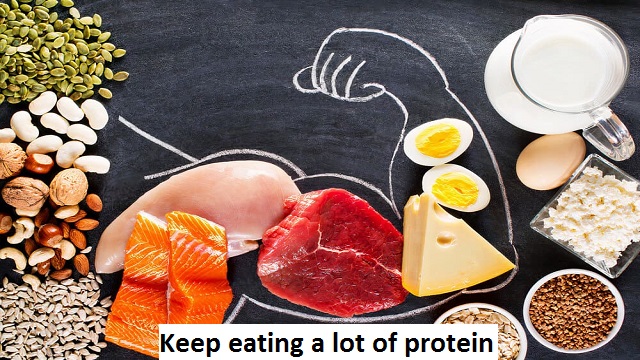
How much time does muscle mass loss take?
After working so hard to gain muscle, nothing is more upsetting than to start losing it. Week after week, endless training hours, months of heavy lifting. However, unforeseen events that interfere with your training are unavoidable and a recognized side effect of the training cycle if you’re a regular gym goer.
If you’ve recently recovered from an injury or have simply taken a long break from exercise, you may be wondering how long it takes to lose muscle mass and how quickly you can gain it back.
Your body prefers and depends on body fat and carbohydrates for energy. As a result, when you take a training break, your body does not use your protein-containing, or muscle-building, mass for energy. However, muscle tissue will still deteriorate over time.
Depending on your current level of fitness and the length of your inactivity, you may lose muscle mass. The more muscle mass you have, the more you have to lose, and the more difficult it is to keep that muscle mass.
According to studies, if you don’t exercise, your muscles can shrink by almost 11% in just ten days, causing you to lose muscle mass. Long-term inactivity or inactivity-related declines in muscle protein synthesis rate result in muscle atrophy. Due to your body’s decreased energy needs, a reduction in training is accompanied by an equal reduction in appetite.
Food consumption declines are also associated with a reduction in dietary protein intake, which is necessary for the proper maintenance of muscle mass. When you’re not training, it’s essential to maintain and further assist in the preservation of muscle mass.
A thorough analysis of the growth, maintenance, and loss of strength in top-level American football and rugby players was published in the Journal Sports Medicine. Although strength was maintained for up to three weeks, the review found that strength and power decreased by 14.5 percent during detraining periods.
As you age, your muscle mass naturally decreases. Without exercise or training, adults lose five to seven pounds of muscle tissue every ten years. Weightlifting and resistance training programs are essential for preserving and gaining muscle mass.
Weightlifting increases bone density, which is important for mobility and strength in addition to helping muscles recover. As you age, there are additional crucial factors to take into account.
It’s crucial to realize that real muscle hypertrophy only occurs in injury situations or after a prolonged period of “detraining,” or complete cessation of exercise.
Muscle memory: What Is It?
It’s okay to take a break from weightlifting, especially since “muscle memory” allows you to build up your muscle mass again. “Muscle memory” describes the ability of the skeletal muscle to recall the anabolic growth phase, or the “loading phase,” and then to reload the muscles when training is resumed following a prolonged unloading or detraining period.
In comparison to muscle cells that have never experienced trauma or stress, cells that experience the same anabolic stress and trauma they previously experienced recover and rebuild more quickly. This indicates that when earlier growth had been experienced, the muscle has a better response to load-induced muscle hypertrophy through epigenetic changes.
When the many variables of life cause disruption, muscle memory aids in regaining your strength and size. When trying to build a specific physique, consistency is essential, but occasionally skipping a few days won’t have a major impact on your progress.
How Can Muscle Mass Be Regained And Maintained?
There are a few tried-and-true methods to keep your muscle so you can resume training when you’re ready if you’re concerned that taking a training break will cause you to lose muscle mass.

Keep Your Calorie Levels Up:
Your appetite loss will happen right after you start to do less activity. Most likely, cutting calories will result in a caloric deficit and weight loss. Weight gain results from consuming too many calories while remaining sedentary. Given your decreased activity and altered basal metabolic rate, it is imperative to maintain the proper calorie intake in order to preserve your muscle mass and body composition.
A nutrition coach is very helpful in this situation. It can be significantly more difficult to decide how much food you should be eating to maintain your muscle mass if you don’t know your macronutrient requirements or the proper caloric intake.
Any exercise is preferable to none.
You can still get some exercise even if you’re on vacation or can’t make it to the gym. Heavy lifting is not necessary to gain muscle; any type of strength training exercise using one’s own body weight or resistance bands can help one maintain their strength and muscle mass.

Keep eating a lot of protein.
In order to maintain your body composition and preserve muscle, what you eat is just as crucial as how much. Protein is essential for your body to rebuild and restore muscle mass. As a result, eating foods high in protein, protein-rich snacks, and supplementing with a protein shake will improve your strength and help you maintain the muscle you’ve worked so hard to develop.
How to Reverse Muscle Loss in Older People?
Older adults are much more likely than younger adults to die from COVID-19, but many also experience loss of muscle mass, a less well-known health risk brought on by the pandemic. Falling is the leading cause of accidental death in people 65 and older, and one of the main causes of falls is this loss.
Loss of muscle mass and strength, also known as sarcopenia—from the Greek words “sarco,” which means flesh, and “penia,” which means deficiency or poverty—begins as early as our 30s but is more common in older people. Physical inactivity and a poor diet both increase the risk of developing sarcopenia.
Many older people are probably more sedentary than ever right now because gyms are closed and community centers are under lockdown.
At the Jean Mayer USDA Human Nutrition Research Center on Aging at Tufts University, I am the team leader for a group of researchers who examine how diet and exercise affect sarcopenia. I’m astounded every day by how patients are affected by this condition.
Sarcopenia not only increases the risk of falls but also the social isolation that follows them, which can have a negative impact on an elderly person’s health in multiple ways. Another illustration of how the pandemic has wreaked havoc is this.
Sarcopenia, however, is not a coronavirus-specific condition. As part of the natural aging process, people will lose strength and muscle mass as they get older. When people lose muscle mass, fat and fibrous tissue take its place, giving muscles the appearance of a marbled steak.
Inactive seniors lose more than others due to the variable rate of decline. In general, according to research, people between the ages of 60 and 70 have lost 12 percent of their muscle mass, and people over the age of 80 have lost 30 percent.
Sagging skin and flabby arms are only a small part of this loss. Loss of muscle mass results in varying degrees of impairment in daily activities like walking. That may set off a chain of events that also limit a person’s capacity to live fully, such as slower movement and loss of balance.
Inflammation, insulin resistance, a decline in testosterone and estrogen levels, and chronic illnesses like Type 2 diabetes, heart disease, and pulmonary disease are also linked to sarcopenia.
How Can I Prevent Muscle Loss?
Although candidate therapies are being developed, there are no FDA-approved treatments for sarcopenia. Meanwhile, a large body of research demonstrates the advantages of regular exercise and a healthy diet for sarcopenia prevention and management. All forms of exercise have advantages, but resistance or strength training is most effective.
Walking and low-intensity strength training, when compared to a control group receiving only health education over a two-year period, significantly decreased the risk of major mobility disability in an older adult study.
The benefits were greatest for people who had previously been sedentary and who reported doing less than 20 minutes of exercise each week. They saw the greatest reduction in the risk of disability by increasing their weekly physical activity by at least 48 minutes.
Other observational studies indicate that diet may also affect the loss of muscle mass and strength that comes with aging. Consumption of protein may be important. In one study, older adults who consumed the least protein scored twice as highly for inflammation as those who consumed the most protein.
According to a different study, people who consume more protein on a daily basis (92 point 2 grams as opposed to 64 point 4 grams) have a 30% lower risk of experiencing increased weakness. However, more investigation is required to clearly define how protein consumption and other nutrients relate to sarcopenia.
Despite how harmful sarcopenia’s effects can be, no universally accepted clinical test exists to diagnose it. However, there are imaging methods for calculating muscle mass, as well as instruments to evaluate physical prowess and functionality. The time it takes to get up from a chair and average walking speed are closely related to measures of muscle strength.
Another problem is that, in spite of all the research, many medical professionals are still unaware of this syndrome. Possibly one of the most effective ways to treat this condition is to inform them about sarcopenia and, perhaps even more importantly, to give them useful advice on how to encourage their patients to engage in healthy eating and physical activity. Seniors deserve to be informed of the risks, as do their loved ones.
Read More: Foods High In Magnesium
Leave a Reply